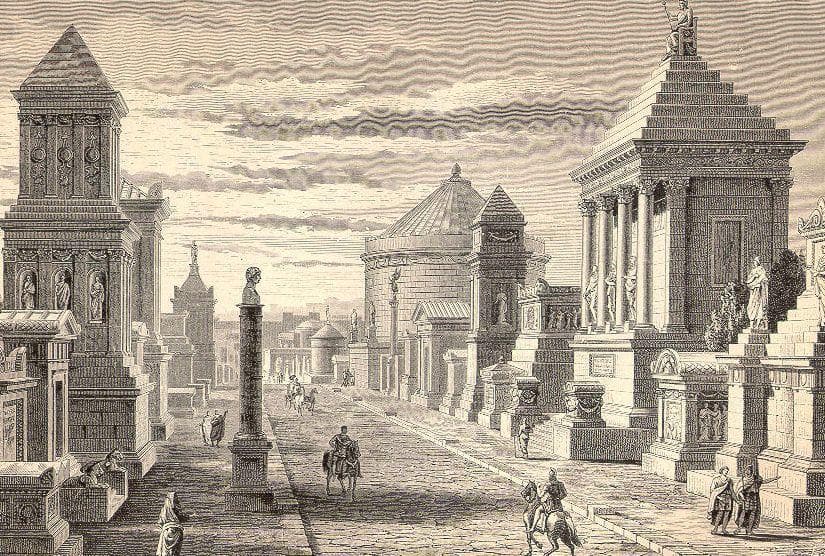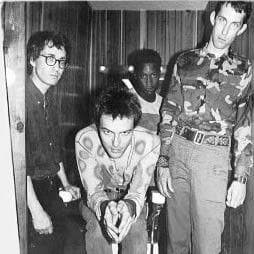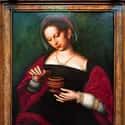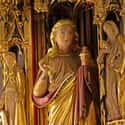-
(#1) For Centuries, A Skeleton In Southern France Has Been Rumored To Be Hers
Medieval legends tell the tale of Mary Magdalene fleeing Israel after Jesus's death and traveling to what is now France. Dan Brown and the scholars whose theories he co-opted - authors of the pseudo-historical book Holy Blood, Holy Grail - posited that she left with her kid or kids by Jesus and she raised them in France, creating what would become an early French dynasty.
Either way, a body reportedly belonging to Mary Magdalene resides at the Church of Saint-Maximin in the south of France. Recently, scientists and artists reconstructed the skeleton's face; the woman, whoever she is, has high cheekbones and a round face. Of Mediterranean descent, the lady was around 50 when she died. Future DNA tests could tell us where she came from.
Biological anthropologist Philippe Charlier told National Geographic:
“We are absolutely not sure that this is the true skull of Mary Magdalene. But it was very important to get it out of anonymity.”
-
(#9) She Got Conflated With Even More Marys In The Gospels
It's already been mentioned that Mary Magdalene is associated with another Mary who had seven devils, as well as a penitent with an alabaster jar. But there are so many other Marys in the Bible besides Mary Magdalene and the Virgin Mary, and our Magdalene gets conflated with a few of those ladies.
The Gospel of John mentions a woman named Mary anointing Jesus, but Bart Ehrman contends this is Mary of Bethany, not Mary Magdalene. Mary of Bethany was another of Jesus's followers and the sister of Lazarus, whom Jesus resurrected. These two Marys get mashed up with various anointers throughout, making one big Mary mess.
-

(#11) There Is No Evidence Of A "Secret Gospel" Or Secret Society Hiding Her Body Or Bloodline
Despite the fact that Dan Brown and conspiracy theorists have espoused these ideas, there is no provable evidence that Mary Magdalene had any children, that a secret society is hiding her descendants, or that a coded "lost gospel" exists depicting her marriage to Jesus. For one, there is no physical evidence of Mary Magdalene giving birth.
Scholars have debunked the existence of the so-called Priory of Sion as an organization aimed at protecting the secret existence of Jesus and Mary's descendants and their holy bloodline. And the idea of a secret gospel is false; the proponents of this theory are actually just making up a convenient narrative about a text that's been around for years.
-
(#2) The Best Evidence We Have Says She Was One Of Jesus's BFFs And Witnessed The Crucifixion
In most of the four canonical Gospels - Matthew, Mark, John, and Luke - Mary Magdalene is one of Jesus's most important disciples. In fact, in John, she is the first to see the door of Jesus's tomb rolled back; when she's crying in front of his tomb, Jesus reveals himself to her first, ahead of any of the apostles. She went to Peter and the rest to spread the Good News and share the Word. In Luke, a number of women, including Mary Magdalene, heard important words from angels, which they related to the rest.
So it's established Mary Magdalene was one of Jesus's most important confidantes after his Resurrection, someone he trusted intimately, in the Gospel tradition. As an editorial in Biblical Archaeology noted, Mary Magdalene was "an influential follower of Jesus" and a sort of female apostle - but there's no evidence in these texts of her being his wife or anything more than part of his entourage, albeit an important one.
-
(#3) The Idea Of Her As A Prostitute Is Just Pure Sexism
Mary Magdalene was not a prostitute, contrary to modern perceptions. But why do we think she was? The Gospel of Mark mentions Jesus cast seven demons or devils out of a woman named Mary; the Gospel of Luke calls her "Mary, also called Magdalene, from whom seven demons had gone out." And later Christian commentators conflated these two women, along with a mysterious woman with a bad reputation who anoints Jesus with ointment from an alabaster jar. There are a few other minor figures tied in here, too.
Originally, the ailment - personified by "demons" - cast out of Mary Magdalene might have been physical, but Christian commentators interpreted these ailments as moral failings, as James Carroll noted in Smithsonian. The sixth-century Pope Gregory I (later known as "the Great") typified the early Christian impulse to demonize or cast down some female figures in the Church. He delivered a series of speeches that not only rolled all the above female figures into one, but deemed Mary a repentant sinner from whom Jesus cast out all the bad things (AKA demons).
He got into the idea that Mary had once perfumed her private parts with the unguent and was a sex worker, but then wiped Jesus's feet with her hair and repented. Bart Ehrman, a prominent scholar of early Christianity, goes into great detail on his blog about why this is factually impossible in the Gospels - not to mention misogynistic!
-
(#4) Her Name Gives Us Some Important Details About Her, Including Her Fishy Past
What else do the Gospels tell us about the Magdalene? We know her name was Mary, but that's not unique. The aforementioned religious studies professor Bart Ehrman, an expert on early Christianity, wrote:
"[Mary] ...was one of the most popular names among Jewish women in the first century. Just within the New Testament, we know of six women who bore the name, including, for example, Jesus’s own mother. And this is out of a total of just 16 women named in the Gospels, so that six out of 16 are called Mary! In the first century, nearly one out of four Jewish women from Palestine whose names are known were called Mary."
"Magdalene" means "of Magdala," a town in Galilee, Jesus's home base. Magdala was a town known for its salted fish, which even Rome loved. Alternatively, Magdala is a reference to "migdal," or "tower" in Hebrew and Aramaic, and the town of Magdala might have originally been known as the "tower of" something.
New Random Displays Display All By Ranking
About This Tool
Mary Magdalene has always appeared in Christian legends as a historical figure saved by Jesus. It is said that she may be the closest faith companion of Jesus in the world, or that she is the best pith of Jesus who has not been recorded in official history. But there has been controversy over the authenticity of Maria Magdalene and her deeds in history.
There is no evidence to support the identification of Mary Magdalene as a prostitute or a guilty woman, despite popular descriptions of her. It is believed that Mary Magdalene witnessed most of the events approaching the crucifixion of Jesus. The random tool explained 12 details of Mary Magdalene that you must be interested in.
Our data comes from Ranker, If you want to participate in the ranking of items displayed on this page, please click here.














